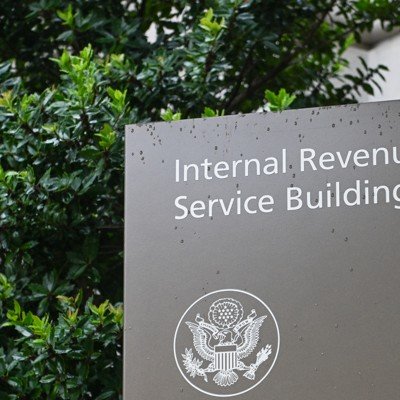Treasury Department leadership says they will modernize the IRS within two years, but workforce cuts, contract changes and operational uncertainty for the IRS tech team could make that difficult.
“It’s unfortunately the case that for the last 35 years, we have been five years away from the IRS being modernized. We will not say that in the 36th year,” Michael Faulkender, acting IRS commissioner and deputy treasury secretary, said at a Thursday event at the Tax Policy Center.
“We are working to complete the vast majority of our modernization efforts in the next two-to-three years,” he said, echoing the recent budget IRS proposal that lists a two-year goal for the IRS finishing most “most” key modernization initiatives.
The IRS is “allocating resources to make sure that modernization is accelerated,” Faulkender added.
Getting the job done will be the responsibility of the incoming IRS commissioner, former Rep. Billy Long, R-Mo., whom the Senate confirmed on Thursday. But his task could be complicated by the loss of IRS staff.
The tax agency has already shed over 20% of its workforce since President Donald Trump took office. That includes about 2,000 technology employees, Nextgov/FCW first reported last month, as well as over 50 fired IT executives and the departure of the tax agency’s tech leadership.
The tax agency’s acting chief information officer, Kaschit Pandya, told IT staff during a Thursday meeting that he doesn’t have information about future layoffs, according to a transcript obtained by Nextgov/FCW. Those staff reductions have been paused due to a court injunction, though the case is currently pending before the Supreme Court, which is expected to issue a decision in the coming days.
The IRS budget lists a nearly 60% reduction to IT and support staff in the coming fiscal year from 10,371 people in 2025 to 4,250 employees. That means that the loss of 2,000 tech employees is only about half of what’s to come.
If all those who signed up for the administration’s delayed resignation offer are approved to leave and layoffs resume as anticipated, the overall IRS workforce reductions could bring the agency below 60,000 employees. That would mark a reduction of more than 40% since Trump took office.
As people leave, they take decades of institutional knowledge with them, one current IRS employee told Nextgov/FCW.
“It’s not business as usual,” another said. “It can’t be. Everyone is gone.”
“Systems break and it takes days to fix them because no one is left who knows how,” they said. It’s making modernization projects take longer because of time dedicated to “putting out fires” where “the guy who knows how to fix it is gone.”
A two-year modernization timeline is “wishful thinking” due to the complexity of the work and ongoing workforce changes, a third said.
Faulkender also touted changes to the tax agency’s contracts on Thursday, saying that the IRS has cut $2 billion from its IT budget without operational disruptions as it’s renegotiated, scaled back and at times eliminated IT and professional services contracts.
The IRS, which didn’t respond to a request for comment, announced that it was pausing its modernization work in March.
“The IRS is in the process of aligning to the new Treasury leadership priorities,” the budget document states, “and many investments are currently under review to ensure prudent and efficient use of taxpayer resources.”
These changes have slowed modernization work, one of the IRS employees told Nextgov/FCW, as “all monies being spent on contracts/budget is being vetted through Treasury and scrutinized heavily.”
The budget request includes a 37% decrease in spending for technology and operations as well as the rescission of $16.5 billion of Inflation Reduction Act funding, which the agency says is due to a new strategy for modernization. The 2022 law put about $80 billion into the IRS, although Republicans have pushed to strip away much of that money.
Budget uncertainty is one piece of a complex, uncertain future, where the tech team will nonetheless be critical for the next filing season and for implementing Trump’s tax and spending bill if Republicans push it through both chambers, Pandya told staff Thursday.
The unknowns regarding the fate and extent of layoffs mean the agency and its IT staff “are continuing to operate with some degree of uncertainty,” he explained. The “large ask” of the tech team remains, however, and he vowed it will “continue to march forward.”
During that all-hands meeting, nearly 40% of employees who participated in an internal poll said that they were concerned about the direction of IRS IT.
The IRS tech shop is also in the midst of reorganizing itself away from functions and instead around mission areas led by technical leadership alongside coordinating directors, according to internal agency documents viewed by Nextgov/FCW.
At this point, some tech projects are restarting if they align with the agency’s new verticals, which include compliance, tax processing and taxpayer services, according to one employee.
One major overhaul — a new processing engine for individual tax administration — is set to go live next month after the IRS made progress last year on the decade-plus effort, two employees told Nextgov/FCW. That aligns with the schedule the IRS settled on last year, although moving forward, the new system could be difficult to maintain, as a contract for a central vendor is ending, one said.
The Treasury Department is also engaging in a reorganization of its own, which will consolidate administrative functions like technology and HR. It will establish a Treasury Common Services Center to run shared functions, while mission-specific ones stay in Treasury bureaus, according to documents viewed by Nextgov/FCW. Those mission-specific tasks will include tax processing and revenue collection.
At the town hall meeting, Pandya confirmed to employees that planning for this overhaul is underway, but said many of the specifics have yet to take shape. He suggested some employees would be moving from IRS to Treasury, but did not yet have details on how that would play out.
If the IRS is successful, Faulkender says that modernization will be felt both inside and outside the agency.
“A refreshed IRS will be better positioned to focus its audit resources on the most significant pockets of non-compliance, improve taxpayer access to their own data through the use of modern technology applications and safeguard taxpayers’ private financial information,” he said.




